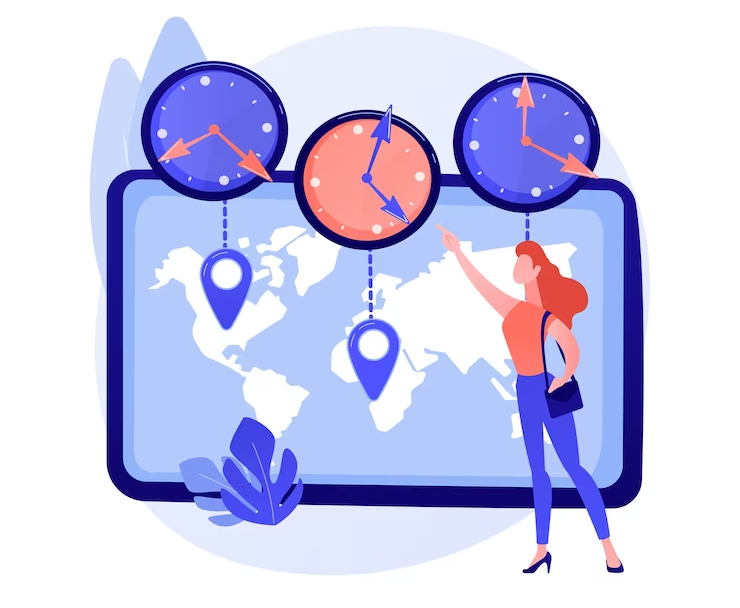In affiliate marketing, GEO is one of the key factors in promoting campaigns. Even beginners understand the differences between countries based on their Tier. However, success in marketing lies where there are innovative approaches to reaching audiences, building brand awareness, and increasing sales. To support these business goals, you can try to move a bit away from classic and familiar geotargeting and implement a geofencing approach in your strategy. They both focus on personalizing ads to specific customers based on their location.
In this article, let’s delve deeper into the topic of geography in targeting and look at the difference between geotargeting and geofencing approaches to boosting your ad campaigns.
Geotargeting in affiliate marketing
In the most general sense, geotargeting is determining the geographic location of a website visitor based on their IP address. This location data is usually a country of origin or, more specifically, a specific region or even a city.
This is useful if, for example, your business is planning to enter a new foreign market. You will have to find a way to reach a larger base of potential customers in that direction with all of its nuances. Running your advertising campaign in English to attract Chinese-speaking customers not only doesn’t make sense, but also can be a waste of time and money. This is where geotargeting will increase your chances of attracting users who are more likely to take targeted action.
What are the benefits of geotargeting?
This technology is an important part of any digital advertising strategy because it helps affiliates and marketers better reach advertising goals and set KPIs. By creating more relevant, targeted ads, affiliates have the assurance that the information about the offer will reach their target audience. Geotargeting allows you to segment the target audience by continent, country, city, or even zip code and specific neighborhood.
By running an ad campaign with geotargeting, you can literally target the right area with the right content. Clearer and more relevant regional advertising provides a more actionable audience. It can also be used to determine which ads are more effective in a particular area.
If you want to reach new GEOs and audiences, maybe it is all waiting for you on Telegram? We’ve prepared some material about Telegram audiences. What are the messenger’s users like this year? How old they are, what they do, and what they are interested in!
Geofencing in affiliate marketing
Geofence is a virtual zone around a particular object on the map. Geofencing is a technology that allows you to interact with users in specified areas. When a client’s mobile device enters this area, programmed events or processes are automatically initiated. Such events can be push notifications with personalized offers or informational messages in a chatbot. Geofencing is a patented technology that provides personal communication at the right time and in the right place.
How does geofencing technology work?
Typically, the app uses GPS, RFID, and Wi-Fi data for geofencing. Thus, all mobile devices with your app will send a signal to the mailing service when they enter or leave a given area. You can also work with geofences without the app, getting your customers’ latitude and longitude, their zip codes from digital advertising networks, and their location based on cell tower signals. But then only the general area would be determined, which is rather inaccurate.
Geofence boundaries can be active or passive. Active geofences require the end user to authorize the location and open the mobile app. Passive geofences are always on. They use Wi-Fi and cellular data instead of GPS or RFID and operate in the background.
The radius of a geofence is usually measured in minutes: the ideal distance is for a customer to reach your store or restaurant in 4 minutes. Geofencing is usually used to remind people that a store is nearby while encouraging them to visit and buy with coupons and promo codes. Of course, this is much more effective for promoting offers sold at physical retailers. But you can think of more creative uses for geofencing.
What geofencing can be used for?
- Increase customer loyalty, average check, and reduce costs
Geofencing allows you to send trigger messages at the right moment — when a person is driving near the store where your offer is being sold. This way you can remind them that the product they put off on the site or in the app is available here and can be picked up.
This approach is also appreciated by customers: one in four thinks that the most useful type of personalization in retail is to receive a message with a coupon or promo code for a discount when you are somewhere near the store. Triggers encourage “impulse” purchases and increase the average check: 43% of consumers are willing to spend more than they planned to if they receive a targeted offer. - Data collection for end-to-end analytics
Using geofencing you can get detailed statistics on visits to offline outlets, even if the customer left without a purchase. This is especially relevant for the omnichannel approach to marketing — you can get more detailed statistics and build more accurate forecasts and strategies. - Local offers and mini-services collaboration
On the basis of geofencing, you can develop an aggregator application and offer location-specific mini-services in a “one-stop-shop” mode. Technically, it can be realized in a blitz-application format. A user will not have to download different applications and maneuver between several sites to see information about discounts in the nearest stores, a coupon for a museum around the corner, or a coupon for a restaurant in the next building. Collect offers around one location like Pokémon in Pokémon Go, target them in one app, and get your commission.
Geotargeting vs. geofencing: what’s the difference?
Geofencing and geotargeting are part of location-based marketing; they are similar in their operating model, but their goals are different. While geofencing is simply drawing a virtual fence around a specific geographic location, geotargeting involves using different factors to reach specific users.
Taking a closer look at this thesis, geofencing is used to reach all users (mostly cell phone users) within a certain radius of a predetermined location around which you are building a boundary. And whenever users cross that invisible boundary, they will see your ads in a mobile browser or mobile app, and receive a push notification or an SMS alert. With geofencing, you can target specific zip codes, neighborhoods, or even more specific physical locations.
Geotargeting, in turn, in some points is one step ahead in location-based marketing. It is customized to a broader geographic location (cities, states, countries), and it also allows you to add additional parameters to narrow down your target audience by demographics, interests, and behaviors. This ensures that your ads are only delivered to users who meet the specified targeting criteria in the desired geographic area. In addition, with geotargeting, you can exclude specific location targets.
Final thoughts
The location-based approach to promotion has long been used in digital and affiliate marketing. While your competitors have stuck to the usual geotargeting, you have the opportunity to take an original move and apply geofencing.
Each of these techniques has its pros and cons, for example, geofencing provides hyper-relevant advertising based on location, while geotargeting provides more personalized advertising based on location, interests, behaviors, and demographics. At the same time, geofencing can provide fast conversions and sales, while geotargeting promotes brand awareness and future conversions.
Which method will make your campaigns more effective is up to you. We wish you success and high conversions in any way!









